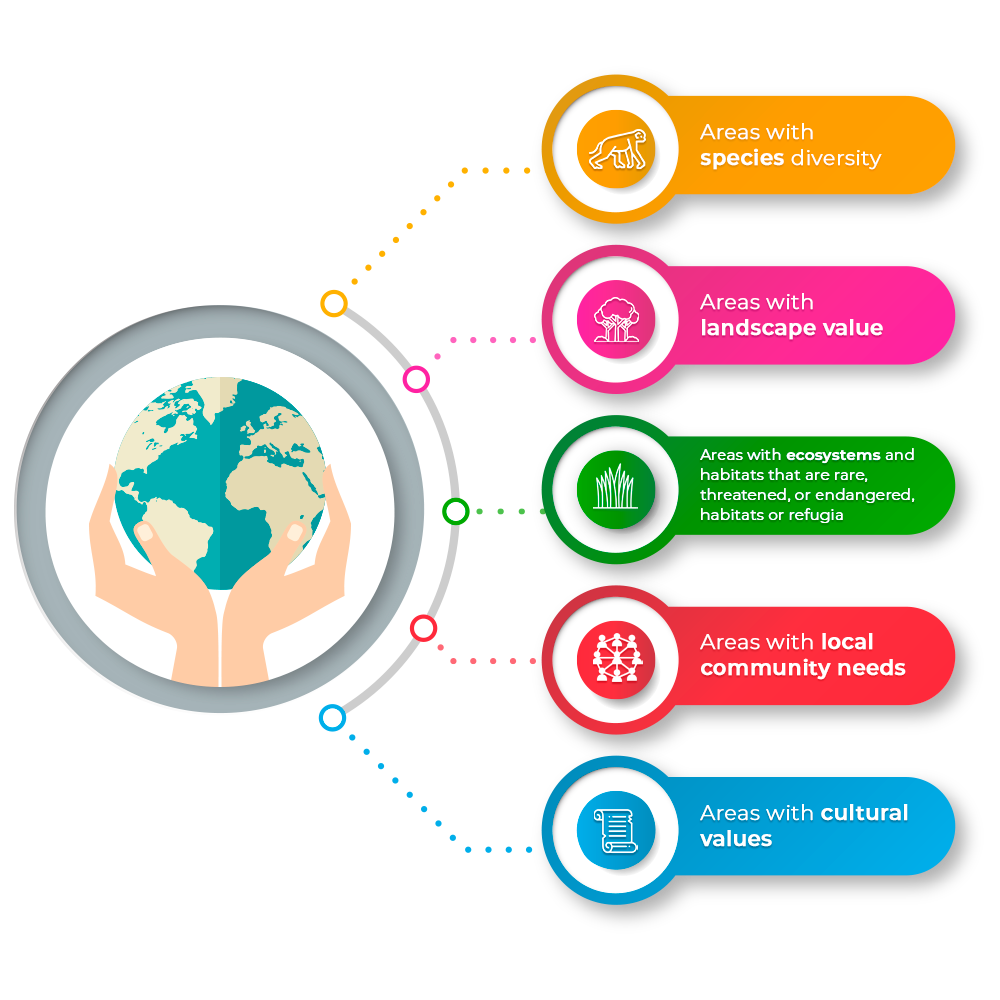What are HCVs?
Nature offers mankind many services we sometimes do not realize. These include for example the provision of raw materials (e.g. wood, sand) and energy that are used by us to produce goods and value-added services. Nature also serves us in the removal of waste from our activities, for example, and provides us with leisure’s opportunities and social spaces. These are called environmental services (services that are provided to us by nature).
Beyond mankind, nature has an intrinsic value such as those related to protecting rare and endemic species and providing habitats to animal, insects and all kind of natural life.
The HCVs (High Conservation Value) is a concept applied to areas with biological, ecological, social or cultural value with outstanding significance at the national, regional or global level or of critical importance at the local level, considering the services and value that nature offers. The HCV approach helps to identify and protect these valued resources in places where there is rapid expansion of agriculture, forestry and aquaculture posing risk of loss of these areas.
ProTerra adopts the HCV concept when it comes to defining what type of natural environment are to be protected from expansion of agricultural activity. There are six categories of HCVs to protect, these are:

- Areas with species diversity: concentrations of biological diversity including endemic species, and rare, threatened or endangered species, that are significant at global, regional or national levels. A reference to help identified endangered species is the IUCN Red list of Endangered Species. An Example are the Bornean orangutans. An area where these animals live is therefore considered and HCV such as the Sundaland biodiversity hotspot area in East Kalimantan, Indonesia.
- Areas with landscape value: ecosystems and mosaics large landscape-level ecosystems that are significant at global, regional or national levels, and that contain viable populations of the great majority of the naturally occurring species in natural patterns of distribution and abundance. An example is the Canadian boreal forest belt.
- Areas with ecosystems and habitats that are rare, threatened, or endangered, habitats or refugia. A reference that helps to identify these is the IUCN Red List of Ecosystems. An example of such area is the grassland region of La Plata Basin in Argentina.
- Areas that have ecosystem services or basic ecosystem services in critical situations, including protection of water catchments and control of erosion of vulnerable soils and slopes. Here one considers the services people obtain from ecosystems and the risk of losing these. An example is cork oak and holm oak woodlands of southern Portugal.
- Areas with local community needs: sites and resources that are fundamental for satisfying basic necessities of local communities or indigenous people (health, nutrition, etc..), identified through the engagement with these communities. An example is the region of Cabo Delgado province in Mozambique.
- Areas with cultural values: sites, resources, habitats and landscapes of global or national cultural, archaeological or historical significance, and/or of critical cultural, ecological, economic or religious/sacred importance for the traditional cultures of local communities or indigenous peoples, identified through engagement with these local communities or indigenous peoples. These areas are sometimes considered UNESCO World Heritage Sites, such as the Tumbang Titi Subdistrict, west Kalimantan in Indonesia.
ProTerra requires that to be certified an organization must not have areas of native vegetation cleared or converted into agricultural areas, or used for industrial or other commercial purposes, after 2008, including the HCVs. Now it should be clear why the preservation of theses HCV areas are important. By adopting the HCV approach ProTerra Foundation is supporting more sustainable agricultural practices in the food and feed supply chains.
ProTerra Foundations believes that human activities can be in balance with the nature so that we can all enjoy the services it has to offer, today and tomorrow.
Sources of information:
https://hcvnetwork.org/
https://hcvnetwork.org/wp-content/uploads/2018/05/2019-HCV-National-Interpretation-Guide.pdf
https://proforest.net/en/news/progress-towards-a-national-hcv-interpretation-for-brazil